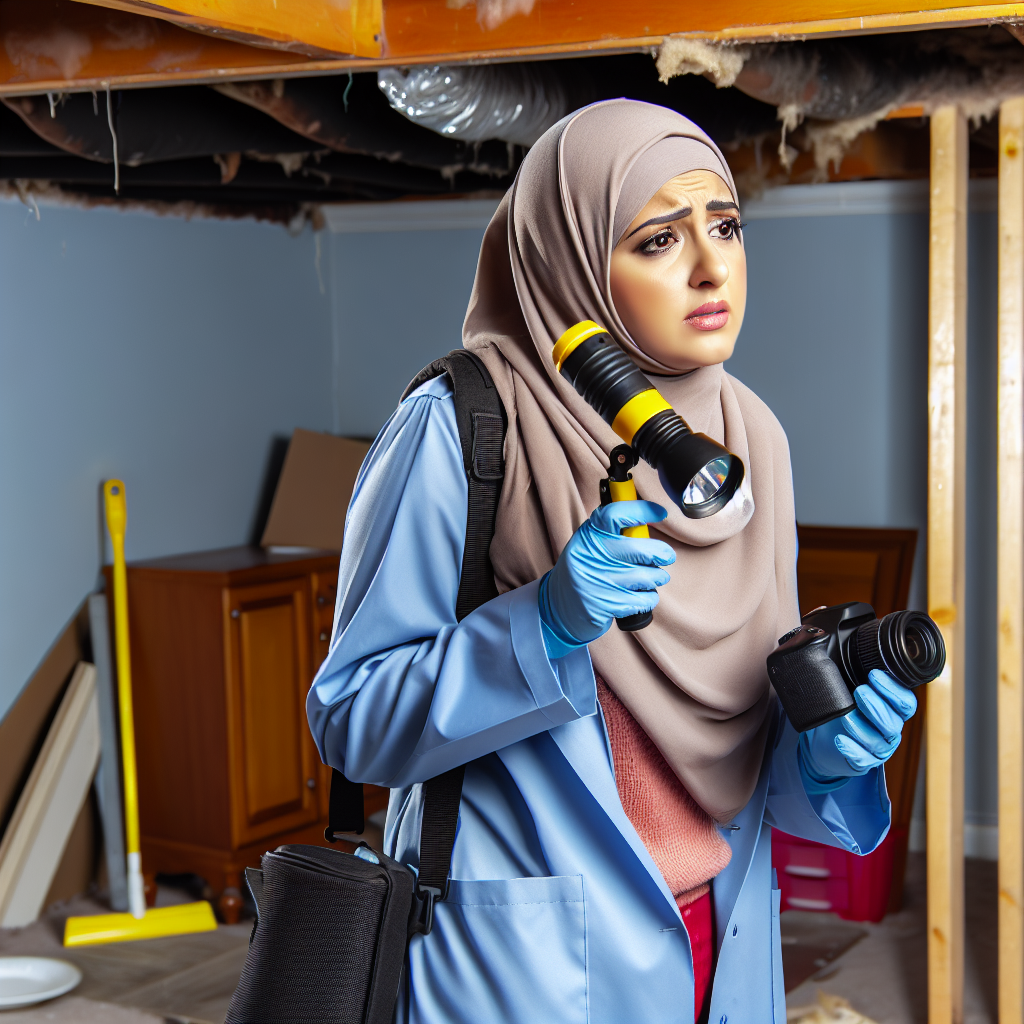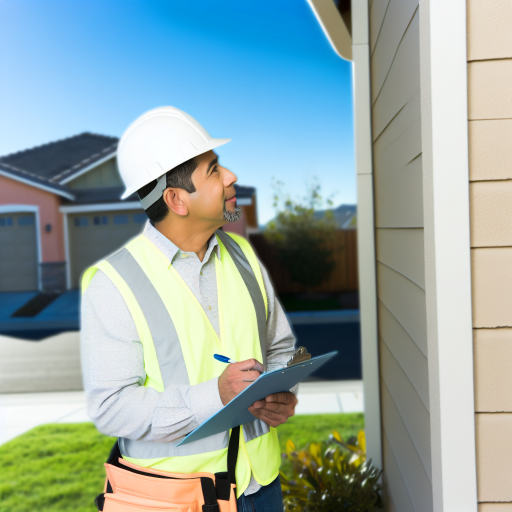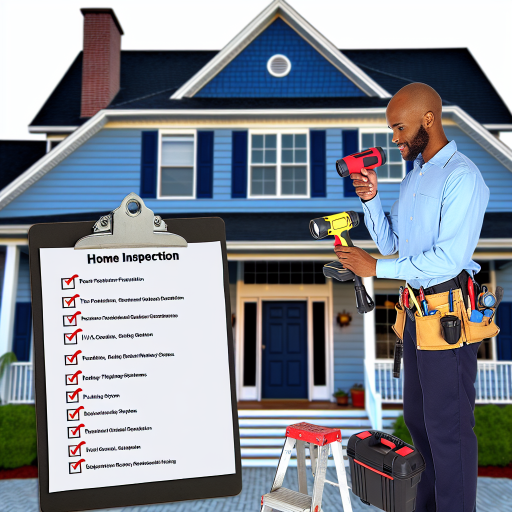Introduction to Environmental Hazards in Home Inspections
Home inspections play a crucial role in identifying potential environmental hazards.
Understanding these hazards is vital for safeguarding homeowners.
Environmental hazards can include various substances and conditions.
These may pose health risks to occupants of the property.
Some common hazards found in homes are lead, asbestos, and mold.
Additionally, radon gas is a significant concern in many areas.
Each of these hazards requires careful inspection and assessment.
It is essential to be aware of local regulations regarding these issues.
Proper training equips inspectors to identify and address these risks.
Homeowners should prioritize environmental assessments during transactions.
Ultimately, this knowledge fosters healthier living environments.
Common Environmental Hazards
Lead exposure can arise from deteriorating paint or plumbing systems.
Young children are especially vulnerable to lead poisoning.
Asbestos is a fibrous material once widely used in construction.
It can become hazardous when disturbed or damaged.
Transform Your Real Estate Decisions
Unlock personalized real estate insights crafted just for you. Get actionable advice designed to amplify your success.
Get StartedMold thrives in damp, poorly ventilated spaces.
This can lead to respiratory issues and other health problems.
Radon is a naturally occurring gas that can seep into homes.
Long-term exposure may result in serious lung health issues.
Importance of Professional Inspection
Hiring a qualified inspector ensures a thorough examination.
They utilize specialized tools to detect environmental hazards.
A professional report provides valuable insights for homeowners.
Identifying hazards early can save costly remediation later.
Moreover, many inspections include testing for air quality.
This can reveal hidden contaminants affecting indoor environments.
Homeowners can then make informed decisions regarding necessary repairs.
Preparation for Home Inspectors
Inspectors should gather necessary tools before the inspection.
Tools may include moisture meters, testing kits, and protective gear.
Creating a checklist helps ensure all hazards are evaluated.
Showcase Your Real Estate Business
Publish your company profile on our blog for just $200. Gain instant exposure and connect with a dedicated audience of real estate professionals and enthusiasts.
Publish Your ProfileInspectors should also educate homeowners about potential issues.
This helps raise awareness and promotes proactive measures.
Lastly, documenting findings with photographs and notes is crucial.
Understanding Common Environmental Hazards
Types of Environmental Hazards
Environmental hazards fall into various categories.
The most common types include chemical hazards, biological hazards, and physical hazards.
Chemical hazards involve harmful substances that can pollute air, water, and soil.
Biological hazards stem from living organisms, such as bacteria and viruses.
Physical hazards are natural events like floods, earthquakes, or extreme weather.
Identifying Chemical Hazards
Chemical hazards can derive from numerous sources.
Household cleaning products often contain toxic chemicals.
Pesticides and herbicides used in landscaping can pose risks too.
Furthermore, industrial waste can contaminate local water sources.
To minimize exposure, always read labels and follow safety instructions.
Recognizing Biological Hazards
Biological hazards can spread via various channels.
Common sources include mold, allergens, and bacteria.
For instance, damp areas can facilitate mold growth.
Foodborne illnesses can arise from improperly stored food.
To prevent these hazards, maintain cleanliness and proper ventilation.
Assessing Physical Hazards
Physical hazards can significantly impact your home environment.
Natural disasters represent major risks, including floods and earthquakes.
Additionally, radon exposure is a concern in certain regions.
Being aware of your area’s susceptibility can help you prepare.
Consider installing smoke detectors and securing heavy furniture.
Importance of Regular Monitoring
Regular monitoring is crucial for ensuring safety.
Conduct routine inspections for potential hazards.
Check for signs of mold growth or leaks.
Also, be vigilant about chemical storage and usage.
Environmental assessments can help identify risks before they become severe.
Checklist for Indoor Air Quality Assessment
Understanding Indoor Air Quality
Indoor air quality significantly impacts health and comfort.
Common indoor air pollutants include volatile organic compounds, mold, and dust.
Showcase Your Real Estate Business
Publish your company profile on our blog for just $200. Gain instant exposure and connect with a dedicated audience of real estate professionals and enthusiasts.
Publish Your ProfileConsider the sources of these pollutants within your environment.
Conducting an Indoor Assessment
Begin by inspecting ventilation systems for dust buildup.
Check air filters and replace them regularly for optimal performance.
Ensure the air exchange rates meet recommended guidelines.
Identifying Sources of Pollution
Examine household products for harmful chemicals.
Look for fuels, paints, and cleaning supplies that emit toxins.
Use safer alternatives whenever possible to reduce risks.
Additionally, assess any visible moisture or mold growth.
Monitoring Humidity Levels
Maintain indoor humidity levels between 30% and 50%.
Use a hygrometer to monitor humidity effectively.
Control excess moisture to prevent mold growth and dust mites.
Testing for Radon
Radon is a colorless and odorless gas that poses health risks.
Test your home for radon, especially in lower levels.
Install a radon mitigation system if levels exceed recommended limits.
Regular Maintenance
Schedule regular inspections of HVAC systems.
Clean ducts and vents to ensure efficient airflow.
Maintain appliances that may produce indoor pollutants.
Utilizing Indoor Plants
Certain indoor plants improve air quality effectively.
Consider plants like spider plants, peace lilies, and ferns.
These plants help filter harmful chemicals from the air.
Educating Household Members
Inform everyone about the importance of indoor air quality.
Encourage practices that reduce pollution, such as cleaning regularly.
Remind everyone to avoid smoking indoors to maintain clean air.
Learn More: Pros And Cons Of Buying A Fixer-Upper For First-Time Homebuyers
Evaluating Mold and Mildew Risks in Properties
Understanding Mold and Mildew
Mold and mildew thrive in damp, dark environments.
They can grow on various surfaces, including walls, ceilings, and floors.
Understanding their presence helps in risk assessment.
Identifying Sources of Moisture
Check for leaks and water damage in the property.
Inspect plumbing systems for signs of wear or leaks.
Evaluate the level of humidity throughout the home.
Showcase Your Real Estate Business
Publish your company profile on our blog for just $200. Gain instant exposure and connect with a dedicated audience of real estate professionals and enthusiasts.
Publish Your ProfileBasements and attics are often primary moisture sources.
Conducting a Visual Inspection
Perform a thorough visual inspection of all rooms.
Look for visible signs of mold or mildew on surfaces.
Pay attention to corners, around windows, and under sinks.
Check behind appliances and in closets for hidden mold.
Testing Indoor Air Quality
Consider hiring professionals for air quality testing.
Indoor air quality can reveal unseen mold pollutants.
Testing can identify specific types of mold in the air.
Preventative Measures
Increase ventilation in high-moisture areas.
Utilize dehumidifiers to control humidity levels.
Regular maintenance can prevent water leaks and damage.
Seal any cracks in walls or foundations to reduce moisture.
Responding to Mold and Mildew Issues
Address any mold growth promptly to prevent spread.
Use appropriate cleaning solutions for mold removal.
Consider consulting professionals for extensive infestations.
Following remediation, monitor the area to ensure safety.
See Related Content: How To Handle Bidding Wars As A First-Time Homebuyer In The USA
Assessing Lead-Based Paint and Lead Hazard Risks
Identifying Lead-Based Paint
Many homes built before 1978 contain lead-based paint.
This paint can become hazardous when it deteriorates or is disturbed.
Inspect surfaces for chipping or peeling paint to identify risks.
Also, check areas where children frequently play.
Testing for Lead Hazard
Consider hiring a certified inspector for accurate testing.
They can perform a lead risk assessment and provide a detailed report.
Home testing kits are also available for DIY assessments.
Follow the kit instructions carefully for reliable results.
Understanding Health Risks
Lead exposure can lead to serious health issues, especially in children.
It may cause developmental delays, learning difficulties, and behavioral problems.
Additionally, adults can suffer from hypertension and reproductive issues.
Thus, addressing lead hazards promptly is crucial for safety.
Mitigation Strategies
Mitigating lead hazards ensures a safer living environment.
Showcase Your Real Estate Business
Publish your company profile on our blog for just $200. Gain instant exposure and connect with a dedicated audience of real estate professionals and enthusiasts.
Publish Your ProfileConsider encapsulating lead-based paint with a specialized sealant.
This method helps prevent exposure without removing the paint.
Alternatively, complete removal by a certified contractor is recommended.
Ongoing Maintenance and Monitoring
Regular inspections can help you monitor conditions effectively.
Keep an eye on surfaces for signs of wear or damage.
If you find deterioration, take immediate action to address it.
This proactive approach limits lead exposure risks.
Gain More Insights: How to Choose the Right Real Estate Agent for Your Home Purchase
Identifying Asbestos Contamination in Older Homes
Understanding Asbestos
Asbestos is a naturally occurring mineral that was widely used in construction.
It has excellent insulation and fire-resistant properties.
However, it poses serious health risks when its fibers are inhaled.
Knowing the signs of asbestos is crucial for homeowners.
Common Locations of Asbestos
Older homes often contain asbestos in various materials.
It may be found in insulation around pipes and boilers.
Additionally, it is commonly present in ceiling tiles and floor tiles.
Some roof shingles and siding also contain asbestos.
Understanding these common locations is key during an inspection.
Signs of Disturbed Asbestos
Disturbed asbestos can be identified through visible damage.
Look for peeling or fraying insulation materials.
Also, pay attention to crumbling floor tiles and damaged ceiling tiles.
Even minor renovations may disturb asbestos material.
If you suspect disturbance, act quickly to ensure safety.
Testing for Asbestos
Testing for asbestos requires specialized procedures.
Contact a certified asbestos inspector for accurate testing.
They will collect samples from suspected materials safely.
Laboratories will analyze these samples for asbestos content.
Options for Asbestos Management
If asbestos is confirmed, homeowners have several options.
It can be left in place if undisturbed and in good condition.
Alternatively, professional removal is a safe option.
Encapsulation is also an option, sealing the material with a protective layer.
Showcase Your Real Estate Business
Publish your company profile on our blog for just $200. Gain instant exposure and connect with a dedicated audience of real estate professionals and enthusiasts.
Publish Your ProfileChoose the method that best suits your situation and budget.
Legal and Health Considerations
Asbestos management is regulated by health agencies.
Homeowners should comply with local laws regarding asbestos removal.
Ensure safety first to protect your family and contractors.
Seek legal advice if you are unsure about regulations.
Preventing Asbestos Exposure
Preventing exposure is essential for maintaining safety.
Always wear proper protective gear during inspections.
Limit access to areas containing potential asbestos.
Educate family members about the risks of asbestos exposure.
Stay informed about local regulations and best practices.
You Might Also Like: Home Inspection Checklist For Verifying Safety Standards In A Home

Analyzing Radon Levels and Mitigation Strategies
Understanding Radon
Radon is a naturally occurring radioactive gas.
It forms from the decay of uranium in soil and rock.
Radon can seep into homes through cracks and holes in foundations.
High levels of radon exposure can pose serious health risks.
Long-term exposure increases the risk of lung cancer.
Testing for Radon
Testing radon levels in your home is crucial.
You can use a DIY test kit or hire a professional.
Short-term tests provide results within days.
Long-term tests measure radon levels over several months.
Place the test kit in the lowest livable area of your home.
Interpreting Radon Test Results
The Environmental Protection Agency (EPA) recommends action if levels exceed 4 pCi/L.
Lower levels still warrant attention and further testing.
Understanding the results helps you make informed decisions.
Mitigation Strategies
Several effective mitigation strategies are available.
Installing a radon mitigation system is common.
This system usually involves a fan and vent pipe.
It draws radon from beneath the house and vents it outside.
Sealing cracks and openings can also reduce radon entry.
Ongoing Monitoring
Continuous monitoring is vital for maintaining safe radon levels.
Showcase Your Real Estate Business
Publish your company profile on our blog for just $200. Gain instant exposure and connect with a dedicated audience of real estate professionals and enthusiasts.
Publish Your ProfilePeriodic testing ensures the effectiveness of the mitigation strategy.
Consider installing a radon detector for real-time monitoring.
Regular assessments can help protect your home’s inhabitants.
Understanding the Impact of Soil Contamination on Properties
What is Soil Contamination?
Soil contamination refers to the presence of hazardous substances in the soil.
These substances can occur from various human activities.
Common causes include industrial waste, agricultural chemicals, and improper disposal practices.
The Effects of Contamination on Property Value
Soil contamination can significantly decrease property values.
Potential buyers often perceive contaminated sites as risky investments.
This perception leads to lower demand and consequently lower prices.
Health Risks Associated with Contaminated Soil
Contaminated soil poses serious health risks to humans and animals.
Exposure can occur through direct contact, inhalation, or ingestion.
Common health issues include respiratory problems and skin irritations.
Long-term exposure may lead to chronic diseases.
Identifying Soil Contamination
Inspecting the soil for contamination is crucial before purchasing property.
Home buyers should look for visual signs of pollution.
Signs include unusual colors, odors, or the presence of dead vegetation.
Additionally, conducting soil tests helps confirm contamination levels.
Remediation Strategies
Addressing soil contamination often requires professional help.
Common remediation techniques include excavation, bioremediation, and soil washing.
Each method has its pros and cons, depending on the situation.
Investing in remediation can restore property value and safety.
Preventing Soil Contamination
Preventative measures can effectively minimize soil contamination risks.
Using environmentally friendly products reduces harmful substance buildup.
Proper waste disposal and recycling practices further help protect the soil.
Community awareness and education are also vital prevention strategies.
Understanding the Importance of Soil Contamination Awareness
Understanding soil contamination is essential for property ownership.
Being informed leads to better decision-making in real estate transactions.
Ultimately, protecting the environment benefits both current and future generations.
Reviewing Water Quality Testing and Potential Contaminants
Importance of Water Quality Testing
Water quality testing ensures your drinking water is safe.
This process identifies harmful contaminants in the water supply.
Showcase Your Real Estate Business
Publish your company profile on our blog for just $200. Gain instant exposure and connect with a dedicated audience of real estate professionals and enthusiasts.
Publish Your ProfileRegular tests can prevent health issues related to poor water quality.
Moreover, understanding water quality helps in making informed decisions.
Common Contaminants Found in Water
Several contaminants can compromise water safety.
These include lead, bacteria, and pesticides.
Each has unique health risks associated with it.
For instance, lead exposure can affect cognitive development.
Bacterial contamination can cause severe gastrointestinal illnesses.
Testing Methods for Water Quality
Various methods exist for testing water quality.
Laboratory tests provide comprehensive analysis results.
Alternatively, home testing kits offer convenience for immediate results.
Additionally, you can hire certified water testing companies.
These professionals can accurately assess water quality and safety.
Steps to Ensure Safe Water Supply
First, regularly test your water supply.
Next, be aware of local water sources and their potential risks.
Consider installing filtration systems if necessary.
Furthermore, stay informed about public water quality reports.
Lastly, educate your family about water safety practices.
Maintaining Safe Water Quality
Maintaining safe water quality is critical for health.
Regular testing and understanding potential contaminants can protect your family.
Ultimately, informed decisions lead to safer water consumption.
Resources for Homeowners and Inspectors
Essential Guidelines for Homeowners
Homeowners should educate themselves about potential environmental hazards.
Use reliable resources to understand risks in your area.
Local government websites often provide valuable information.
Additionally, community workshops can enhance your knowledge.
Read home inspection reports carefully for insight into issues.
Consult with professionals for personalized advice on safety measures.
Inspection Resources for Professionals
Inspectors must stay updated on industry standards.
Join professional associations to network and share knowledge.
Attend continuing education courses to improve skills.
Use comprehensive checklists tailored to environmental hazards.
Showcase Your Real Estate Business
Publish your company profile on our blog for just $200. Gain instant exposure and connect with a dedicated audience of real estate professionals and enthusiasts.
Publish Your ProfileEvaluate local resources for training opportunities.
Consider certifications that enhance credibility and expertise.
Recommended Reading and Tools
Homeowners should access reputable books on environmental safety.
Check out online forums for shared experiences and tips.
Use apps that help identify and assess home hazards.
Inspectors can benefit from updated software for reporting findings.
Utilize local libraries to find valuable research papers.
Seek out industry publications for the latest trends and strategies.
Engaging with Local Authorities
Connect with local environmental agencies for up-to-date information.
Attend public meetings to stay informed about community issues.
Involve yourself in local initiatives focused on safety.
Be proactive in understanding zoning regulations relevant to hazards.
Encourage discussions with neighbors about home safety practices.




